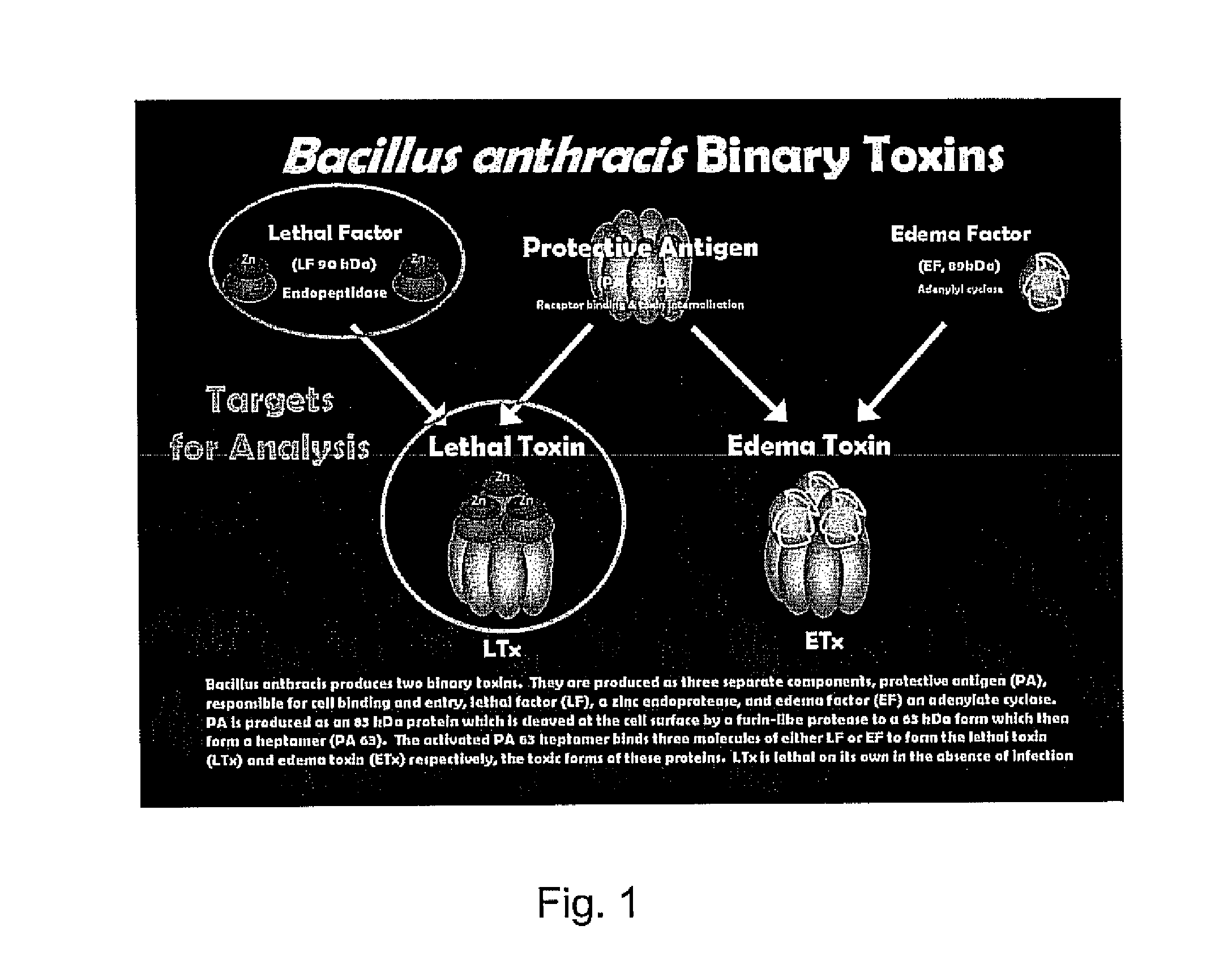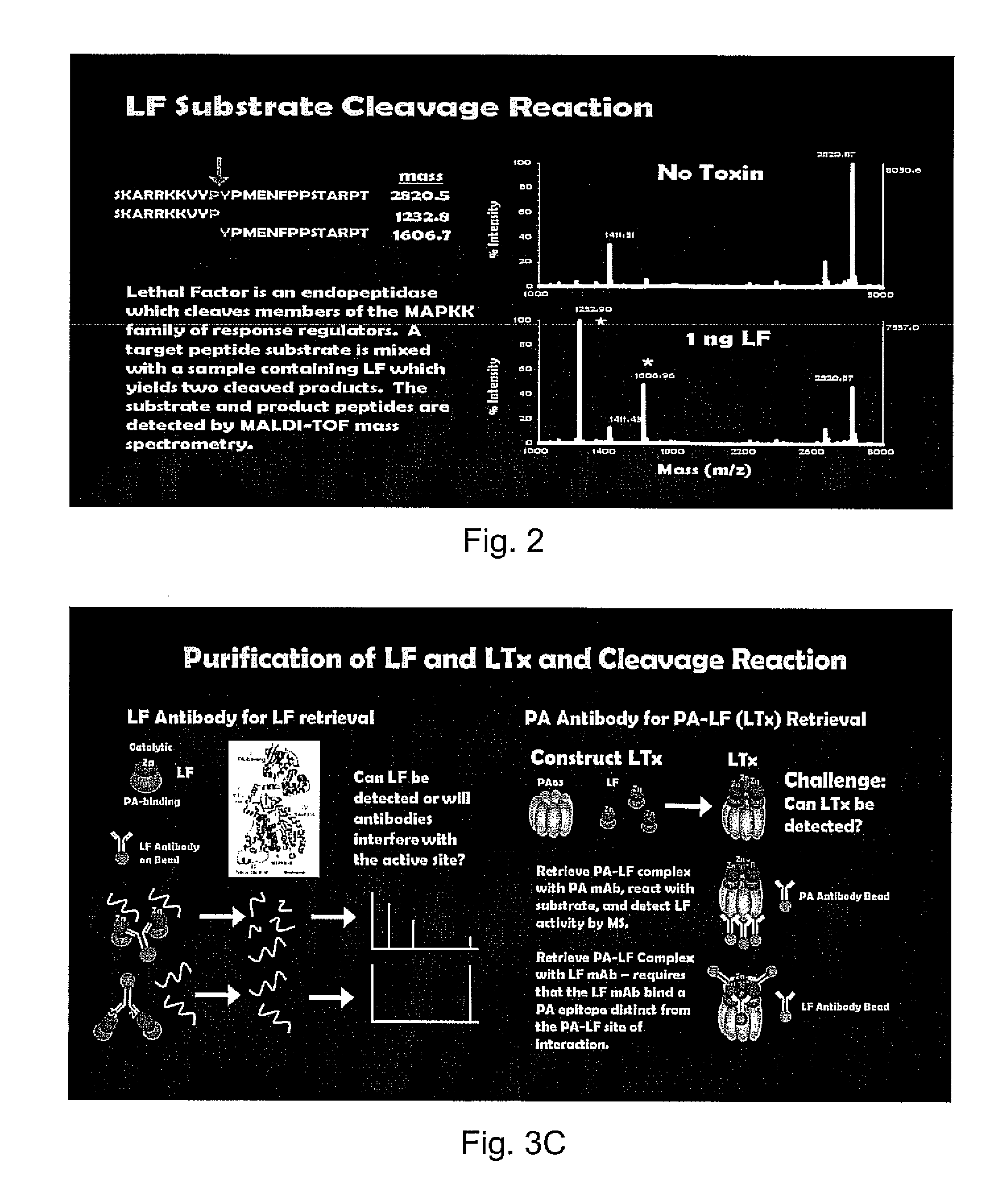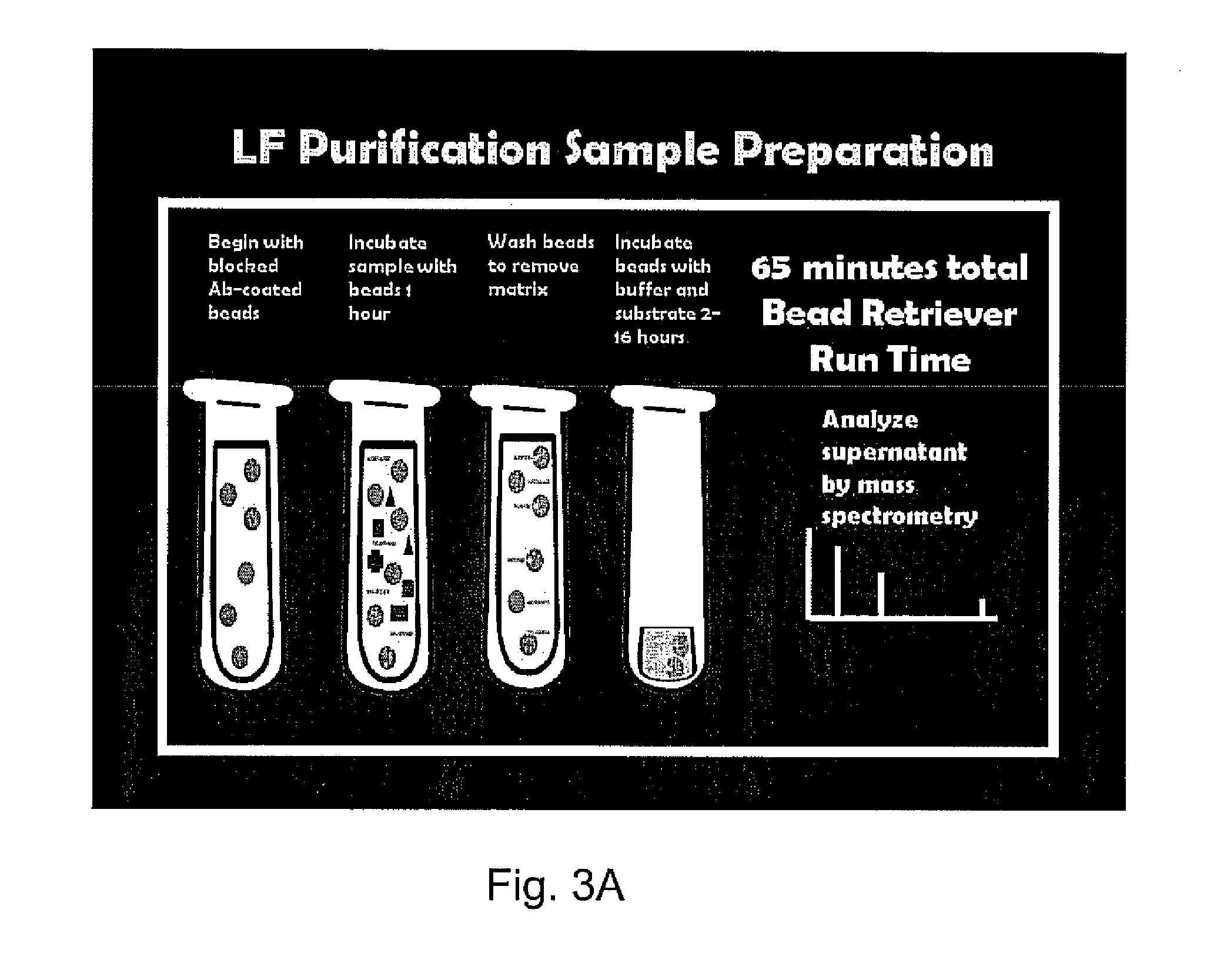Detection of anthrax pathogenicity factors
a pathogenic factor and anthrax technology, applied in the field of disease diagnosis, can solve the problems of cytokine dysregulation and immune dysfunction, shock, respiratory failure, death, etc., and achieve the effect of measuring the relative catalytic efficiency of anthrax pathogenic factor
- Summary
- Abstract
- Description
- Claims
- Application Information
AI Technical Summary
Benefits of technology
Problems solved by technology
Method used
Image
Examples
example 1
Preparation of Protein G Beads
[0055]Protein G coated beads are obtained from Invitrogen. 20-100 μl of bead suspension are used to covalently link Ig from a 100 μl sample to the beads according to the manufacturers protocol. To separate the beads the reaction tube is placed on a magnet for 1 min and the resulting supernatant discarded by aspiration. The beads are resuspended in phosphate buffered saline with 0.05% Tween20, pH 7.3 (PBS-TW) and stored until ready for use Thorough washing is achieved by repeating the magnetic pelleting and resuspension steps three times.
example 2
Coating Protein G Beads with Desired Anti-LF Antibody
[0056]Anti-LF coated magnetic beads (LF-MABs) are prepared using mouse monoclonal anti-LF IgG that is prepared according to the manufacturer's protocol (Invitrogen) using 40 ug IgG / 100 ul magnetic bead suspension.
example 3
Purification and Concentration of LF from Serum
[0057]A serum, plasma, pleural fluid or other biological sample is obtained from a patient or infected animal. The sample is diluted in 500 μl PBS-TW and mixed gently with 20 μl MABsLF MABs for 1 hour. The beads with LF and LTx bound are retrieved, washed three times in PBS-TW, then reconstituted in PBS-TW for further analyses by mass spectrometry, as shown in FIGS. 3A and 3B.
PUM
| Property | Measurement | Unit |
|---|---|---|
| mass | aaaaa | aaaaa |
| volume | aaaaa | aaaaa |
| pH | aaaaa | aaaaa |
Abstract
Description
Claims
Application Information
 Login to View More
Login to View More - R&D
- Intellectual Property
- Life Sciences
- Materials
- Tech Scout
- Unparalleled Data Quality
- Higher Quality Content
- 60% Fewer Hallucinations
Browse by: Latest US Patents, China's latest patents, Technical Efficacy Thesaurus, Application Domain, Technology Topic, Popular Technical Reports.
© 2025 PatSnap. All rights reserved.Legal|Privacy policy|Modern Slavery Act Transparency Statement|Sitemap|About US| Contact US: help@patsnap.com



